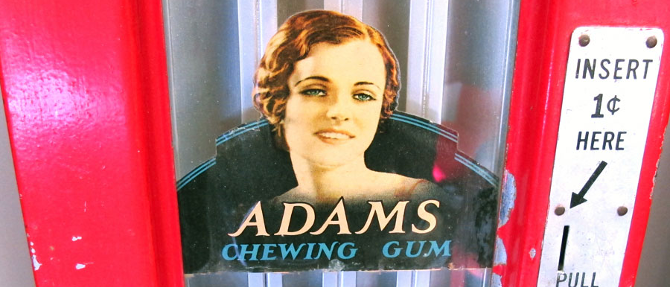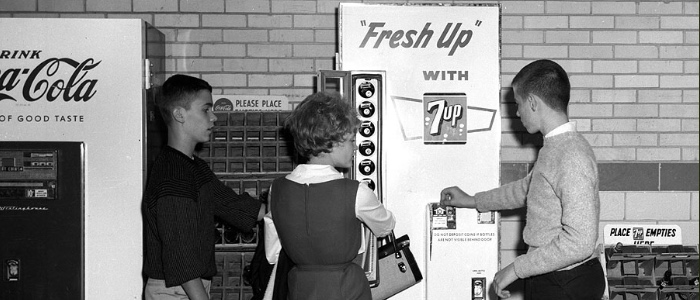History of Vending Machines: Part II
From Holy Water to Coca-Cola, vending machines have come a long way…
Click here to read History of Vending Machines: Part I
History of Vending Machines: Part I finished on stamps, so it only makes sense for Part II to start on postcards.
In 1883, after our friend Simeon Denham had patented the first fully-automatic stamp machine, a fellow innovator named Percival Everitt decided to one up his compatriot by creating the first modern coin-operated vending machine. For a shilling or two, the machine would dispense postcards, notepaper and envelopes.
Everitt’s apparatus proved to be a wild success at train stations and post offices. (Let’s be honest, a postcard machine was the perfect complement to Denham’s stamp dispenser.)
It was therefore no surprise that in 1887, shortly after the introduction of Everitt’s invention, the Sweetmeat Automatic Delivery Company was founded as the UK’s – and the world’s – first company dedicated to the installation and maintenance of vending machines.
Not to be outdone, the US were quick to play catch up as just a year later the Thomas Adams Gum Company (now owned by Cadbury) built America’s first vending machine designed to dispense gum on the New York railway.

Shortly thereafter another organisation, the Pulver Manufacturing Company, began to develop small figures which would move around whenever somebody bought gum from one of their machines. At the time these were known as “trade stimulators”.
While the industry’s progress gets a bit murky from here on out, it is known that the early 20th century saw a number of vending innovations from companies in the US and the UK, many of which are still around today.
A coin-operated restaurant named Horn & Hardart opened in Philadelphia just after the turn of the century, modern cigarette and soda dispensers were introduced in the 1920s, and then the Vendorlator Manufacturing Company developed the first mass-produced Pepsi and Coca-Cola vending machines in the 40s and 50s.
And it’s those machines, it seems, which gave birth to the industry that we know and love today.


